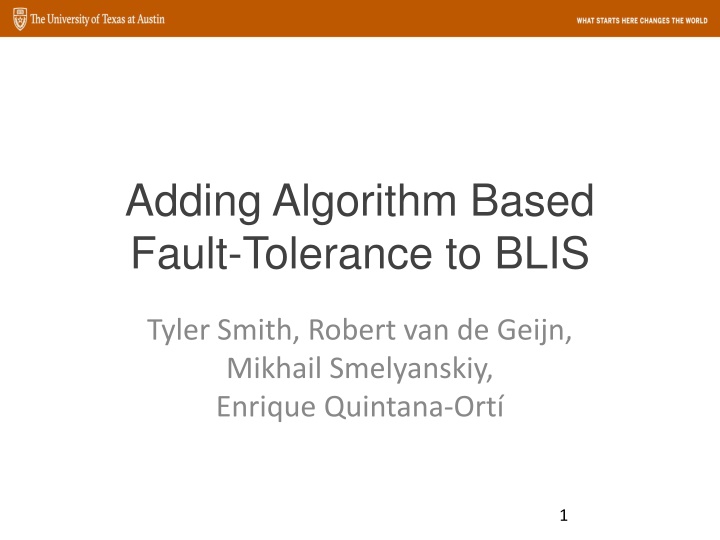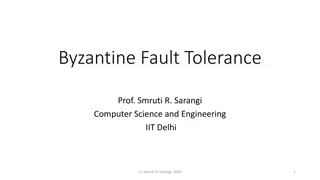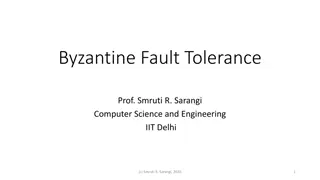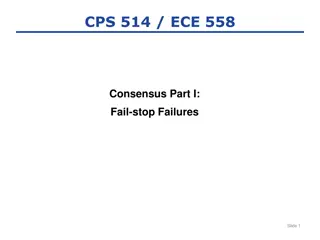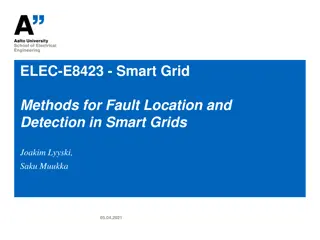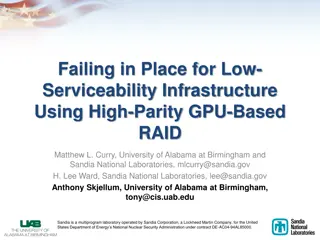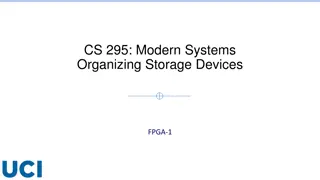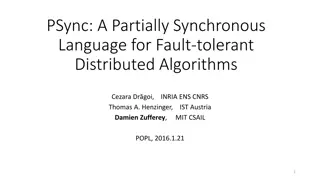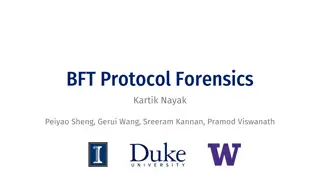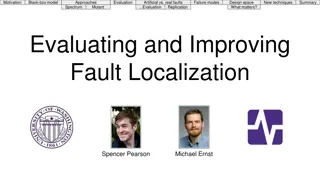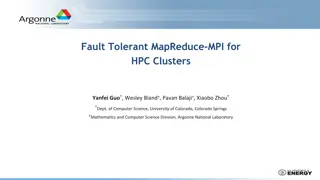Enhancing Fault Tolerance in BLIS with Algorithm-Based Techniques
Addressing the challenge of soft errors in supercomputers, this paper introduces algorithm-based fault tolerance methods to enhance the resilience of systems like BLIS. By integrating Application-Based Fault Tolerance (ABFT) into BLIS, the study aims to improve error detection and correction mechanisms, reducing the impact of transient hardware failures on computational performance.
Download Presentation

Please find below an Image/Link to download the presentation.
The content on the website is provided AS IS for your information and personal use only. It may not be sold, licensed, or shared on other websites without obtaining consent from the author.If you encounter any issues during the download, it is possible that the publisher has removed the file from their server.
You are allowed to download the files provided on this website for personal or commercial use, subject to the condition that they are used lawfully. All files are the property of their respective owners.
The content on the website is provided AS IS for your information and personal use only. It may not be sold, licensed, or shared on other websites without obtaining consent from the author.
E N D
Presentation Transcript
Adding Algorithm Based Fault-Tolerance to BLIS Tyler Smith, Robert van de Geijn, Mikhail Smelyanskiy, Enrique Quintana-Ort 1
Introduction Soft errors: Transient hardware failures Caused by high-energy particle incidence. Cause crashes, and numerical errors Present-day supercomputers: Mean time between failures (MTBF) is already quite high 2
Motivation Future supercomputers: 3 orders of magnitude more components in exascale systems MTBF will deteriorate Resiliance will be a fundamental problem [3] 3
Some solutions Checkpoint and restart of entire application Recovery from hard but not soft error Redundancy Double redundancy to detect Triple redundancy to correct These solutions may cost too much in terms of power budget 4
Application Based Fault-tolerance (ABFT) ABFT [11] Low overhead Needs to be integrated into application FLARE [10] Fault tolerant ITXGEMM [9] Our work Fault Tolerant BLIS 5
Outline Detecting and Correcting Errors Integrating ABFT into BLIS Performance Results 6
Detecting Errors Our GEMM operation: 7
Detecting Errors Right Checksum: 8
Detecting Errors Right Checksum: 9
Detecting Errors Right Checksum: 10
Detecting Errors Left Checksum: 11
Detecting Errors Left Checksum: 12
Detecting Errors Left Checksum: 13
Detecting Errors Error Location: 14
Detecting Errors Multiple Errors: 15
Errors in A and B Single Errors in A or B can corrupt multiple elements of C One corrupted element in A can corrupt a whole row of C One corrupted element in B can corrupt a whole column of C Our approach handles this 16
Correcting Errors Traditional ABFT approach: Calculate what the error is, subtract it away Questions about numerical stability We do checkpoint-and-rollback Checkpoint C to main memory If error is detected, rollback and recompute We rollback and recompute only corrupted elements 17
Outline Detecting and Correcting Errors Integrating ABFT into BLIS Performance Results 18
Integrating ABFT into BLIS Each loop here represents a different layer within BLIS Can implement ABFT at your choice of layer Tradeoff: Higher levels: Cheaper ABFT But errors are detected less soon Lower levels: Expensive ABFT Errors are caught quickly We implement ABFT at the macro- kernel level 19
Fault Tolerance at the Macro-kernel Level Things to add to BLIS Right Checksum Left Checksum Checkpointing C Rollback and Recovery 21
Right Checksum Must compute: B(w) A(Bw) Cw Goal: Reduce extra memory movements 22
Right Checksum B(w) A(Bw) Cw 23
Right Checksum B(w) A(Bw) Cw 24
Right Checksum B(w) A(Bw) Cw 25
Right Checksum B(w) A(Bw) Cw 26
Left Checksum Must Compute vTA (vTA)B vTC 28
Left Checksum vTA (vTA)B vTC 29
Left Checksum vTA (vTA)B vTC 30
Left Checksum vTA (vTA)B vTC 31
Left Checksum vTA (vTA)B vTC 32
Left Checksum Can perform vTA while packing Problem: (vTA) B must be performed once per macro- kernel Left checksum has a higher overhead than right Solution: Perform left checksum lazily Only perform left checksum if right checksum detects error 34
Multithreading Issues Fewer loops have independent iterations Checksum vector computation Solved by giving each thread their own checksum vectors, doing a reduction Load imbalance When 1 thread is busy doing recovery, other threads wait 38
Load Imbalance Solutions: Dynamic parallelism Waiting threads can steal work from slow threads Lazy recomputation Mark corrupted elements of C All threads cooperatively perform recovery Easy to implement in BLIS Data is cold in cache 39
Outline Detecting and Correcting Errors Integrating ABFT into BLIS Performance Results 41
Performance Results Cost of detecting errors No errors introduced Both 1 and 16 core K is set to 256 42
Performance Results Breakdown of costs of detecting errors No errors introduced Single Core K is set to 256 Both Checksums and checkpointing exhibit similar costs 43
Performance Results Breakdown of costs of detecting errors No errors introduced 16 Cores K is set to 256 Both Checksums and checkpointing exhibit similar costs 44
Performance Results Detecting and correcting errors in C Single Core Square matrices Quantifying cost of corrrecting for small matrices 45
Performance Results Detecting and correcting errors in A and B Single Core K = 256 1 error in A corrupts Nc elements of C 1 error in B corrupts M elements of C 46
Performance Results Detecting and correcting errors in A and B Multi Core K = 256 1 error in A corrupts Nc elements of C 1 error in B corrupts M elements of C 47
Thank You! Questions? tms@cs.utexas.edu 48
